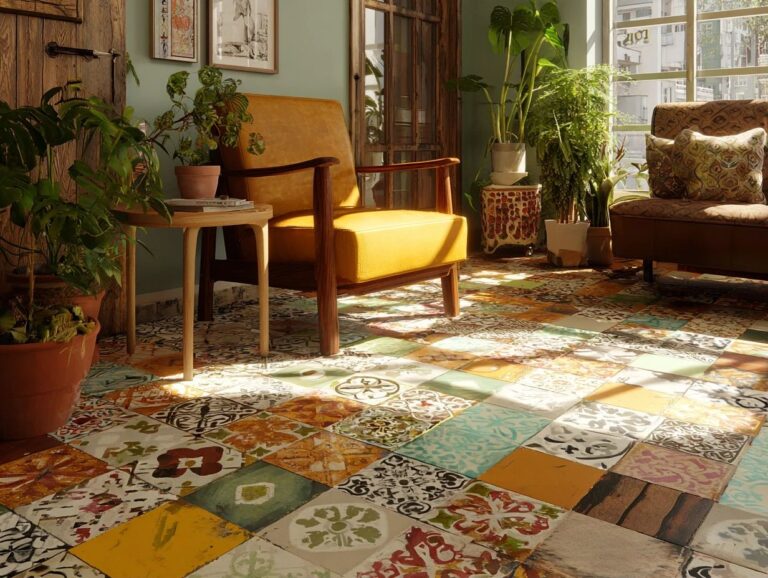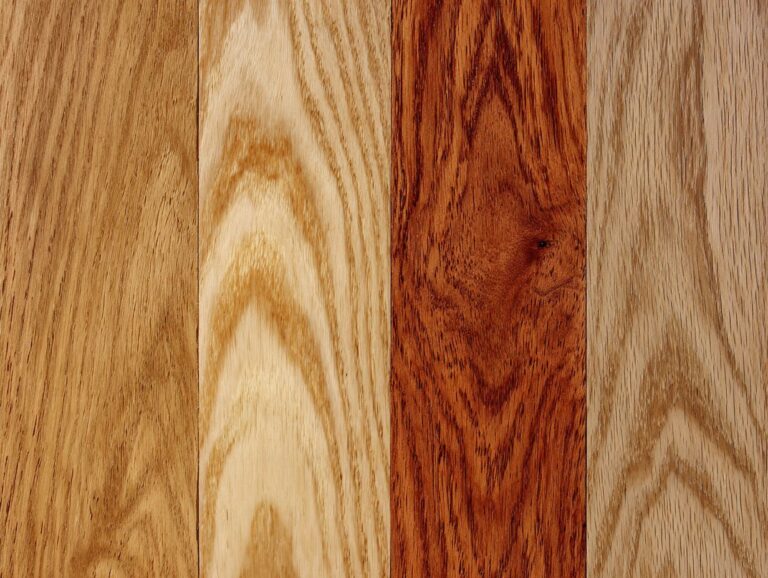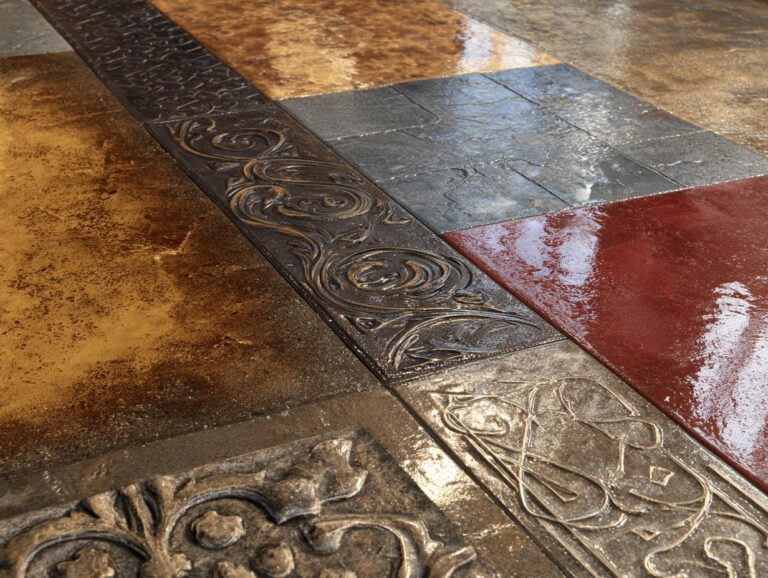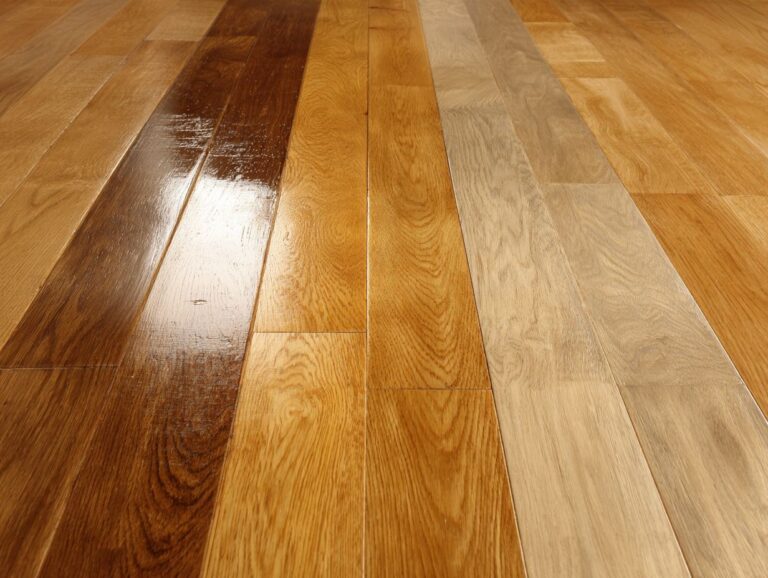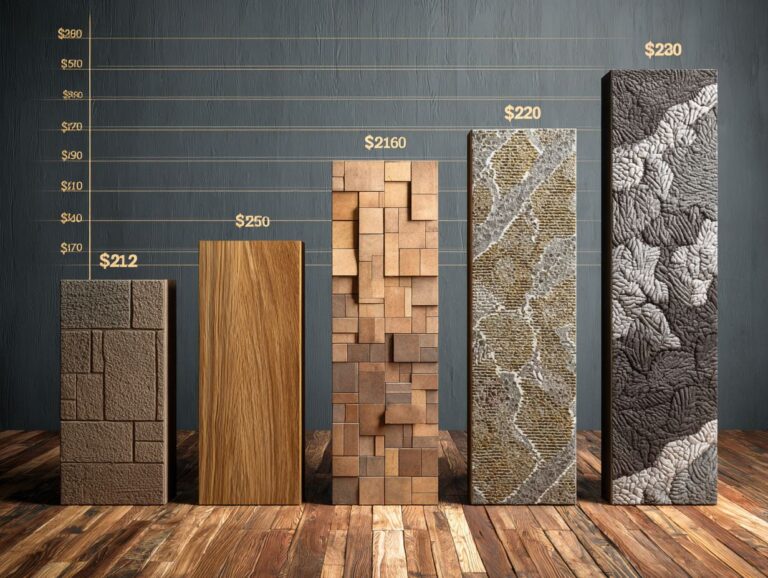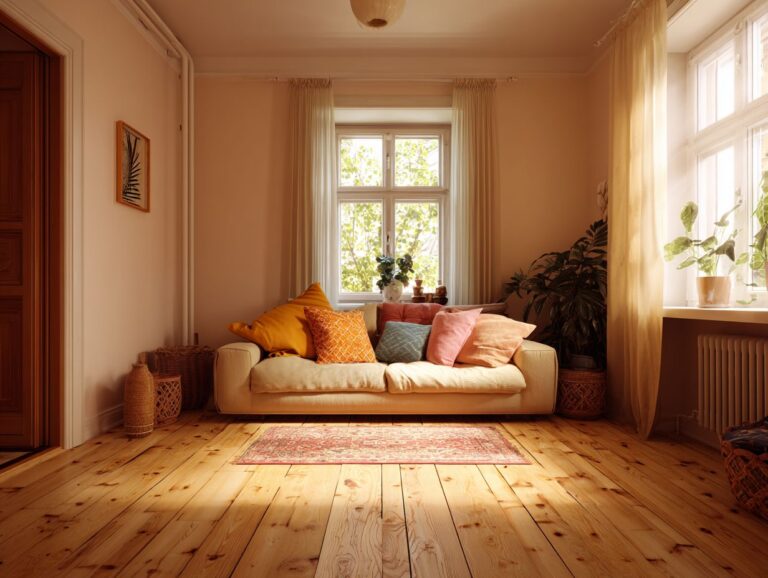Flooring Budget Calculator – How Much to Plan For
Planning a flooring project? A flooring budget calculator can help you estimate material costs and labor costs effectively. Whether you’re shopping at Great Floors, Home Depot, or Joist, it’s important to know how much money to set aside. This article will explain the main factors that affect your flooring costs, so you can make informed decisions without spending too much. Dive in to take control of your flooring finances and maximize your investment!
Key Takeaways:
Contents
- Factors Influencing Flooring Costs
- Flooring Cost and Market Trends 2024
- Resilient Flooring Market Statistics: Resilient Flooring Revenue
- Resilient Flooring Market Statistics: Resilient Flooring Volume
- Resilient Flooring Market Statistics: Market Share
- Resilient Flooring Market Statistics: SPC Pricing
- Resilient Flooring Market Statistics: Market Trends
- Material Choices
- Room Size and Layout
- Labor Costs
- Geographic Location
- Types of Flooring Materials
- Estimating Your Flooring Budget
- Using a Flooring Budget Calculator
- Tips for Staying Within Your Budget
- Frequently Asked Questions
- What is a flooring budget calculator?
- Why should I use a flooring budget calculator?
- How do I use a flooring budget calculator?
- Can a flooring budget calculator be customized for my specific project?
- Is the budget provided by a flooring budget calculator final and exact?
- Can a flooring budget calculator also provide a breakdown of costs?
Importance of Budgeting for Flooring
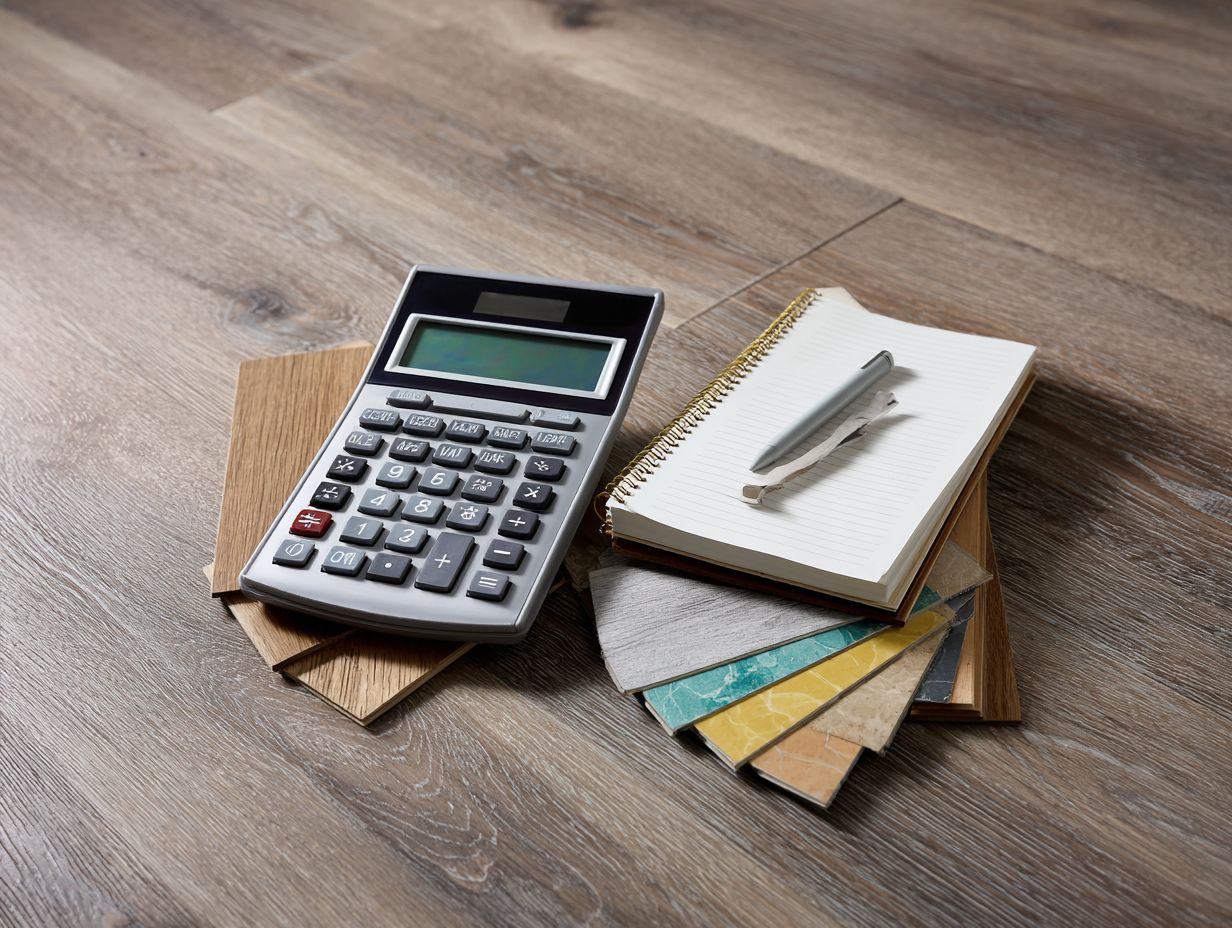
A well-defined budget for flooring can save homeowners up to 15% on total costs while ensuring a seamless installation experience.
To create an effective flooring budget, start by assessing your total project costs, including materials, labor, and waste disposal.
For instance, a family-owned business recently managed a commercial flooring project by itemizing expenses: they allocated $3,000 for high-quality laminate, $1,500 for installation labor, and $500 for tools.
Using software like HomeBudget or Excel allowed them to track these costs in real-time, preventing overruns. Consistent meetings during the installation kept the team responsible, allowing them to finish the project within budget while keeping high-quality work.
Overview of Flooring Options
There are diverse flooring types available, each with distinct characteristics and associated costs, including hardwood, laminate, and vinyl.
Hardwood flooring typically costs between $6 to $12 per square foot and adds a classic look that can increase a home’s value. Brands like Great Floors provide durable options that showcase natural wood grain.
Laminate, priced around $1 to $5 per square foot, mimics the look of wood or stone and is ideal for high-traffic areas due to its scratch resistance. Home Depot carries various styles to suit different tastes.
Vinyl flooring costs between $2 and $7 per square foot. It is a favorite choice because it resists water and is easy to clean, which makes it ideal for kitchens and bathrooms.
Factors Influencing Flooring Costs
Different things will influence how much your flooring job will cost overall, such as the price of materials and the cost to put them in.
Flooring Cost and Market Trends 2024
Flooring Cost and Market Trends 2024
Resilient Flooring Market Statistics: Resilient Flooring Revenue
Resilient Flooring Market Statistics: Resilient Flooring Volume
Resilient Flooring Market Statistics: SPC Pricing
Resilient Flooring Market Statistics: Market Trends
The Flooring Cost and Market Trends 2024 data gives a complete look at the resilient flooring industry, focusing on revenue, volume, market share, pricing, and consumer patterns. This data is important for grasping current market changes and predicting upcoming trends.
Resilient Flooring Revenue indicates a notable decline from $9.46 billion in 2022 to $8.546 billion in 2023, marking a 9.7% revenue decrease. This drop indicates shifts in how people buy or more rivals in the market, leading businesses to rethink their market plans.
In terms of Resilient Flooring Volume, there was a decrease from 6.206 billion square feet in 2022 to 5.768 billion square feet in 2023, a 7.1% volume reduction. This aligns with the revenue decline, indicating reduced demand or shifts towards alternative flooring solutions.
Despite these declines, the Market Share remains significant, with a 34% dollar share and a 35.55% volume share in 2023. This highlights resilient flooring’s continued prominence within the flooring industry, retaining a substantial market position.
SPC Pricing shows stability, with the price per square foot at $1.68 in 2023, only slightly down from $1.69 in 2019. This stability may reflect cost efficiencies or competitive pricing strategies maintaining consumer interest in SPC flooring.
- Market Trends: A notable 29% of residential flooring installations are DIY, indicating a growing consumer interest in cost-saving and personal project involvement.
- Meanwhile, 25% of consumers are delaying flooring purchases, possibly due to economic uncertainties or waiting for better options.
- 40% prefer wood flooring in main living areas, suggesting a strong aesthetic preference despite resilient options.
- SPC holds a 58.8% dollar share in the residential market, underscoring its popularity due to durability and water resistance.
The data highlights both challenges and opportunities within the resilient flooring market. While revenue and volume have declined, strong market shares and stable pricing suggest resilience. The growing interest in do-it-yourself and stone polymer composite products, along with a liking for wood looks, provides useful information for making products and planning marketing strategies in 2024 and later.
Material Choices

The choice of flooring materials significantly affects overall costs, with hardwood averaging $8-$15 per square foot compared to laminate at $1-$5.
When choosing between hardwood and laminate, think about both the upfront costs and the advantages over time. Hardwood is durable, adds value to your home, and is a wise option.
Brands like Great Floors provide high-quality hardwood that can withstand wear, while their laminate options remain budget-friendly yet visually appealing. Conversely, for those on a tight budget or looking for a quick installation, Home Depot’s laminate often features easy click-together designs that reduce installation time.
Analyze your lifestyle and budget before choosing the right material.
Room Size and Layout
The size and layout of the room directly influence the total flooring cost, as larger areas require more materials and labor.
To calculate the square footage, measure the length and width of each room in feet and multiply them. For example, if a room is 12 feet long and 10 feet wide, the square footage is 120 square feet.
Don’t forget to include a waste allowance of 10-15% for mistakes and cutting, so multiply your total by 1.1 or 1.15. Thus, for our example, you’d order between 132 to 138 square feet of flooring material.
This method guarantees you have enough material to cover the whole area completely.
Labor Costs
Labor costs can account for 30-50% of your total flooring budget, depending on the complexity of the installation process.
Factors influencing these costs include installation difficulty, the type of flooring chosen, and geographic location. For instance, hardwood flooring typically requires more specialized skills compared to carpet, which can increase labor fees.
Urban areas often have higher labor rates due to demand. To get the best price, ask for estimates from at least three nearby contractors. This helps you learn the typical costs in your area and gives you the ability to negotiate better deals using those estimates.
Geographic Location
Geographic location greatly impacts flooring costs due to variations in material availability and labor rates across regions.
For example, cities like San Francisco and New York often experience higher flooring costs-averaging $7 to $10 per square foot-due to their demand and limited labor supply.
In contrast, cities such as Phoenix or Houston typically see lower prices, around $4 to $6 per square foot, benefiting from greater material availability and a competitive labor market.
Homeowners and contractors should consider these regional differences to budget effectively when planning flooring projects.
Types of Flooring Materials
Choosing the right flooring matters because each type has its own appearance, benefits, and expenses to consider. To better understand how these costs can vary, see also: Flooring Installation Labor Rates by Region.
Hardwood Flooring
Hardwood flooring typically costs between $8 and $15 per square foot, making it a common choice for homes despite being pricier.
The most common types of hardwood include oak, maple, and hickory.
Oak is durable and offers a classic look, while maple boasts a lighter appearance and tighter grain. Hickory, although less common, is exceptionally tough and often used in high-traffic areas.
Installation can be completed using nail-down, glue-down, or floating methods, with costs ranging from $1.50 to $5 per square foot based on complexity.
Regular care, like refinishing every 5-10 years, can make floors last longer and improve resale value. Research shows that homes with hardwood floors sell for 2-3% more.
Laminate Flooring
Laminate flooring offers a cost-effective alternative at $1-$5 per square foot, simulating the look of wood or tile without the high price tag.
Laminate is resistant to scratches and stains, making it suitable for areas with heavy use.
With proper maintenance, which includes regular sweeping and occasional damp mopping, laminate can last 15-25 years.
When comparing laminate to hardwood, hardwood typically costs between $5-$15 per square foot and offers a longer lifespan, but is more susceptible to damage.
For homeowners prioritizing budget and ease of care, laminate remains an attractive option, providing style without the associated upkeep costs of hardwood.
Tile Flooring
Tile flooring can range from $2-$20 per square foot depending on the material, with ceramic being more economical than porcelain.
Aside from cost, consider aesthetic appeal and functionality. Ceramic tiles come in many patterns and colors, allowing them to fit any decor style.
Porcelain, on the other hand, is denser and more water-resistant, ideal for bathrooms or kitchens. Installation can also vary; while DIY enthusiasts may tackle ceramic with ease, porcelain might require professional help due to its hardness.
Regular maintenance involves sealing grout lines and cleaning with pH-neutral cleaners to make your tiles last longer and stay clean.
Carpet Flooring
Carpet flooring usually costs between $2 and $5 per square foot. It makes a room feel warm and comfortable, which is why many people choose it for bedrooms and living rooms.
When choosing carpet, think about the material:
- Plush is soft and comfortable, great for bedrooms.
- Berber is durable and stain-resistant, making it suitable for places where people walk a lot.
Installation costs typically range from $1 to $3 per square foot, influenced by the carpet’s quality and the room’s layout.
Maintenance varies; plush carpets may need more frequent vacuuming and occasional professional cleaning, whereas Berber carpets can often be cleaned at home due to their tighter weave.
Consider both looks and functionality when selecting your carpet.
Vinyl Flooring
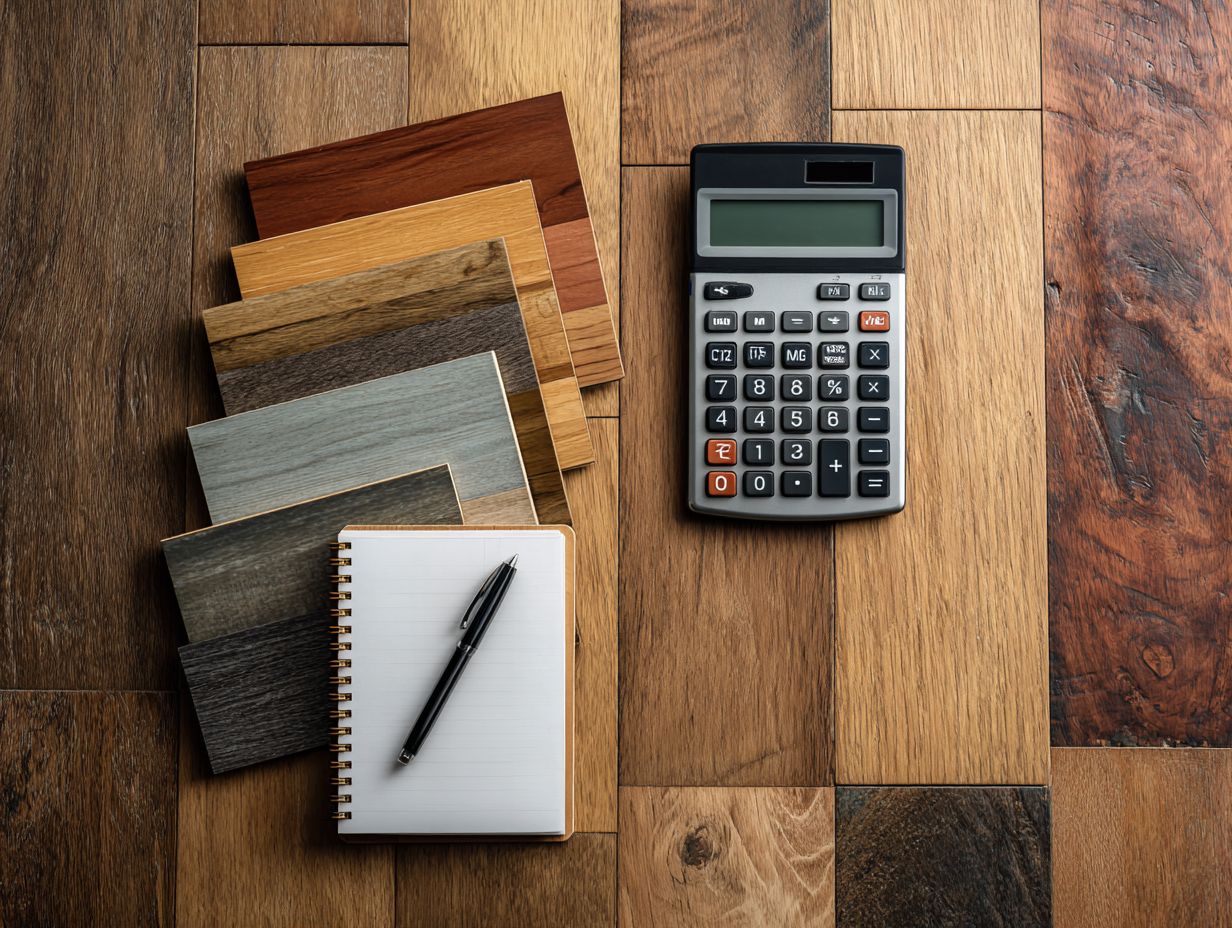
Vinyl flooring costs between $1 and $3 per square foot. It can handle water well and works great in busy areas and places that get wet often.
Installing it is simple-most people can do it themselves using glue or click-lock methods.
Vinyl comes in various styles, including planks that mimic hardwood and tiles that resemble ceramic, catering to diverse aesthetic preferences.
For maintenance, simply sweeping and occasional mopping will keep it looking fresh, with no need for waxing.
Look at brands like Armstrong or TrafficMaster for strong choices, and check out designs with patterns to create a distinct look in your home.
Estimating Your Flooring Budget
To figure out what you’ll spend on flooring, you need to carefully list all related expenses to keep your finances in check. For an extensive analysis of potential costs, our comprehensive guide to flooring installation labor rates by region can provide valuable insights.
Calculating Material Costs
To calculate material costs, multiply the square footage of your space by the price per square foot of your chosen flooring type, plus an additional 10% for waste allowance.
For example, if you’re installing hardwood floors in a 500-square-foot living room at $5 per square foot, your initial calculation would be 500 x 5 = $2,500. Adding 10% for waste brings the total to $2,750.
Don’t forget to consider additional costs like underlayment, which can range from $0.50 to $1.50 per square foot, and any installation fees that might apply.
Always collect prices from suppliers to improve your budget estimate.
Estimating Installation Costs
Installation costs can be estimated by multiplying the total square footage of your space by the average labor rate per square foot, typically ranging from $2-$5.
Different things can affect these costs. The difficulty of the work is important; complicated setups using unique materials or methods can increase the cost.
Geographic labor rates vary widely, with urban areas often charging more than rural locations.
To get correct estimates from contractors, try these suggestions:
- Request itemized estimates
- Verify their credentials
- Compare at least three quotes
This approach helps you gauge a fair market price and avoid unexpected expenses.
Adding Additional Expenses
When budgeting for flooring, don’t forget to account for additional expenses such as underlayment, trim, and removal of existing flooring, which can add 10-20% to your total cost.
Consider factors like installation fees, which may range from $1 to $5 per square foot, depending on the complexity. For example, hiring experts for complex designs will be more expensive than basic setups.
Also, if opting for high-end materials, the cost could substantially increase with associated maintenance supplies. To stay within your budget, list all possible expenses and talk with contractors to get exact cost estimates.
By planning ahead, you’ll spend money carefully and avoid unexpected costs in your flooring project.
Using a Flooring Budget Calculator
Using a flooring budget calculator can make budgeting easier by giving you a clear idea of the costs you can expect based on the details of your project. For a deeper understanding, consider the differences in costs explored in our DIY vs Professional Flooring Installation – Cost Analysis.
Features of a Good Calculator
An effective flooring budget calculator should include features such as material cost input, installation rate adjustments, and waste calculation.
People should be able to enter various room sizes for accurate calculations. Look for calculators that provide a breakdown of costs by square foot, which helps identify budget overruns early.
Some excellent tools include:
- HomeAdvisor’s Flooring Calculator for its user-friendly interface
- Lowe’s Flooring Cost Calculator, which integrates product selections
Make sure the tool works with different flooring types, like hardwood and tile, to improve usability and planning features.
Step-by-Step Guide to Using the Calculator
To use a flooring budget calculator, begin by measuring the square footage of each room and inputting your chosen flooring type and labor rates.
Next, go to the calculator’s section for flooring type. Select the material-options typically include hardwood, laminate, tile, or carpet.
The calculator may provide estimated costs per square foot for each type, helping you choose based on your budget. After inputting the rates, include any additional expenses, such as underlayment or trim.
Review the total cost summary to understand your financial commitment, adjusting choices as needed to stay within budget. This process gives you a complete breakdown of your flooring project expenses.
Tips for Staying Within Your Budget
Keeping your flooring costs on track requires careful planning and setting priorities throughout the project.
Prioritizing Needs vs. Wants
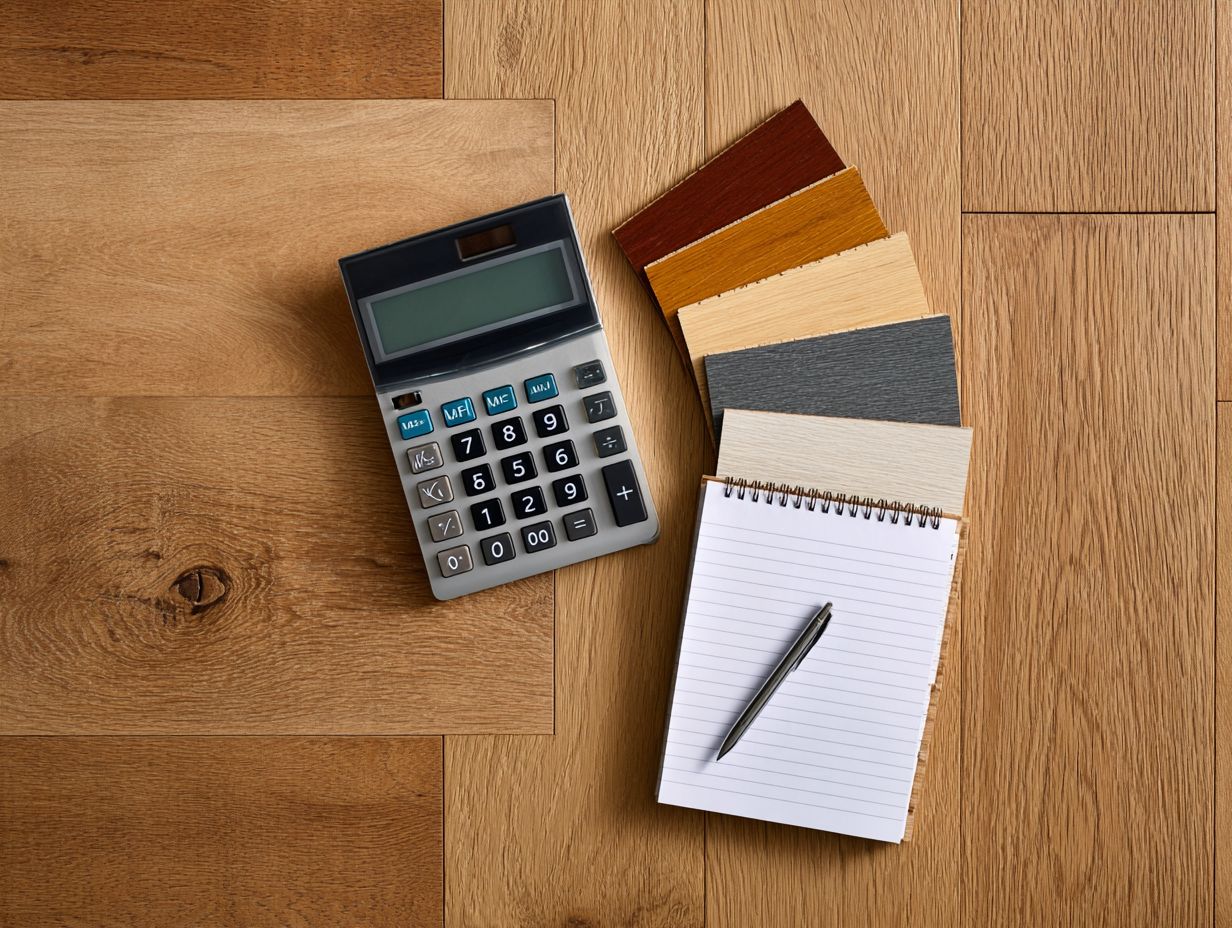
Knowing the difference between needs and desires helps homeowners manage their flooring project budget and make better spending decisions.
- Start by assessing how each space will be used.
- For high-traffic areas, consider durable options like luxury vinyl or laminate, which resist scratches and moisture. Natural hardwood, while beautiful, may require more maintenance and care.
- Make a budget and look at affordable flooring options to see what might work for you. Tools like Home Depot’s online room designer can help you see how styles fit together.
- It’s important to set aside about 10% of your total budget for unexpected costs to help keep your project moving forward.
Exploring Financing Options
Exploring financing options can provide homeowners with more flexibility in their flooring budget, allowing for higher-quality choices without immediate financial strain.
Consider store financing programs, which often offer promotional interest rates or deferred payments for a specified period. These can be beneficial if you anticipate paying off the balance quickly, but watch for high-interest rates once the promotional period ends.
Personal loans, on the other hand, provide a lump sum upfront that you can use for flooring, usually at a fixed interest rate. While they often require good credit, they can lower your overall cost compared to store financing.
Evaluate your financial situation to choose the best option for your needs.
Frequently Asked Questions
What is a flooring budget calculator?
A flooring budget calculator is a tool that helps estimate the cost of flooring materials and installation for a specific project. It looks at the room’s size, the type of flooring, and labor costs to provide an accurate budget plan.
Why should I use a flooring budget calculator?
A flooring budget calculator can save you time and effort in planning for a flooring project. It examines various costs and factors to give you a clear and practical budget to stick to.
How do I use a flooring budget calculator?
Using a flooring budget calculator is simple. Input the required information, such as room dimensions, flooring type, and desired quality, and the calculator will provide an estimated budget for materials and installation.
Can a flooring budget calculator be customized for my specific project?
Yes, most flooring budget calculators have options to input specific details about your project, such as special features or additional costs. This helps you get an accurate budget estimate for your flooring project.
Is the budget provided by a flooring budget calculator final and exact?
The budget provided by a flooring budget calculator is an estimate based on the information provided. Actual costs may vary depending on factors such as location, labor rates, and unforeseen issues during installation. It is always best to leave some room for unexpected costs when using a budget calculator.
Can a flooring budget calculator also provide a breakdown of costs?
Many flooring budget calculators also provide a breakdown of costs, including material costs, labor costs, and any additional fees or taxes. This can help you better understand where your budget is being allocated and make adjustments if needed.
